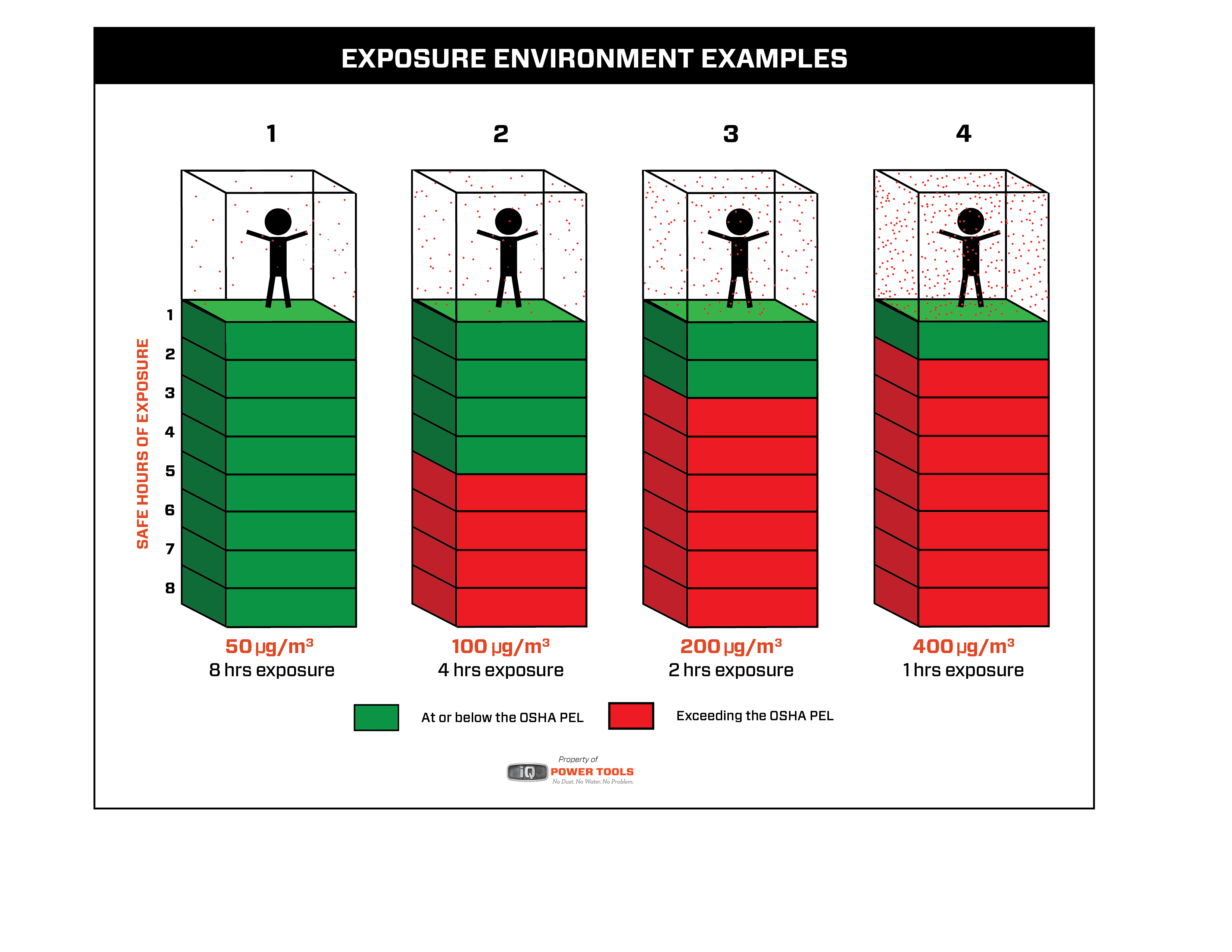OSHA SILICA PEL – 50 µg Si02/m3
What does it really mean?
Words: Joel Guth

I wanted to take the opportunity this month to help everyone better understand the fundamentals of OSHA’s new Silica PEL (Permissible Exposure Limit). As a mason contractor, business owner, and student of silica, I have had the opportunity to talk to literally thousands of people across the country over the years about silica and the PEL. I know from these conversations that a lot of us are frustrated and confused by the new standard.
The overwhelming consensus is that people don’t fully understand the PEL and what 50 µg SiO2/m3 really means. OSHA tried to explain the new Silica Standard and PEL in 1,772 pages. With that much information, it is confusing. It shouldn’t be this complicated – it is a math formula of Air x Dust x Time.
My goal is to boil the 50 µg SiO2/m3 down to its simplest form (two pages) so you can understand it and share it with your team.
Remember, the intent of OSHA’s Silica PEL is to keep people working in a safe environment. OSHA has set the exposure limit to 50 micrograms of respirable crystalline silica per cubic meter of air or, 50 µg SiO2/m³, over an eight-hour time weighted average (TWA).
But what does that really mean? In order to understand the intent of the OSHA Silica Standard, you need to understand the PEL. What exactly is a PEL? In this case, OSHA defines it as “a regulation that establishes the acceptable amount or concentration of a substance (silica) in the air in the workplace. It is intended to protect workers from adverse health effects related to hazardous chemical exposure.” This permissible exposure limit, according to OSHA, is the amount of silica dust a worker can safely be exposed to, averaged over an 8-hour day, for their entire career.
While some workers may engage in a single work practice throughout a workday, others may engage in multiple work practices. As you know, each work practice varies from high exposure to zero exposure to silica.
This is why OSHA lets us average the exposure over an 8-hour day. This averaging allows us to vary the activities a person performs to help keep them in a safe air environment during their workday.
In Figure 1, there are four exposure environment examples of respirable crystalline silica;
- 50 µg/m3 • 100 µg/m3 • 200 µg/m3 • 400 µg/m3
The green in each column represents the amount of time you can safely perform a work practice based on that level of silica exposure. The red in each column represents the balance of time you must work in a clean air environment.
Example 1: If a work practice has a silica exposure level of 50 µg/m3, you can work safely in that environment for 8 hours.
In example 1, think of the “50 µg SiO2” as 50 specks of silica dust floating in that one cubic meter of air around your head.
Example 2: If a work practice has a silica exposure level of 100 µg/m3, you can work safely in that environment for 4 hours, provided the other 4 hours of work practices are performed in a clean air environment.
Example 3: If a work practice has a silica exposure level of 200 µg/m3, you can work safely in that environment for 2 hours, provided the other 6 hours of work practices are performed in a clean air environment.
Example 4: If a work practice has a silica exposure level of 400 µg/m3, you can work safely in that environment for 1 hour, provided the other 7 hours of work practices are performed in a clean air environment.
You can see from these examples that the level of exposure during a work practice significantly affects the amount time you can perform that that task. While some work practices have very low exposure to silica, other work practices we do in the masonry trade can potentially expose workers to respirable crystalline silica at levels of 500 µg to 10,000 µg/m3. These exposure levels are many, many times above the OSHA PEL. Bottom line – you need to know the silica exposure for you and your teammates.
But how do you determine your silica exposure levels for each work practice? The answer is air monitoring. Air monitoring gives exposure level results for specific work practices. You need to have air monitoring results to understand what your exposure levels are. This is an inexpensive and relatively easy process for contractors. Once you learn your exposure levels, you can decide what options are best-suited to control silica exposure on your job sites.
As we know, safety is everyone’s responsibility. Whether you are a business owner, contractor, or employee, understanding the silica PEL and how to effectively minimize exposure is important. I hope this summary was helpful. As tradesmen, the more we know and the more we share, the better we are as an industry. This all helps to move the masonry industry forward.
If you would like more information on air monitoring or would like to see another article on this topic, please contact ShopTalkWithJoel@iqpowertools.com and let us know.
————————————————————————————————————-
About Joel: Joel Guth is the President of iQ Power Tools, manufacturer of power tools with integrated dust collection technology. A third generation mason by trade and contractor for 30+ years, he has been in the construction industry his entire life. Since 1995, Joel has been a student of construction job site safety, always looking to find ways to improve efficiency and safety together with a focus silica awareness.
